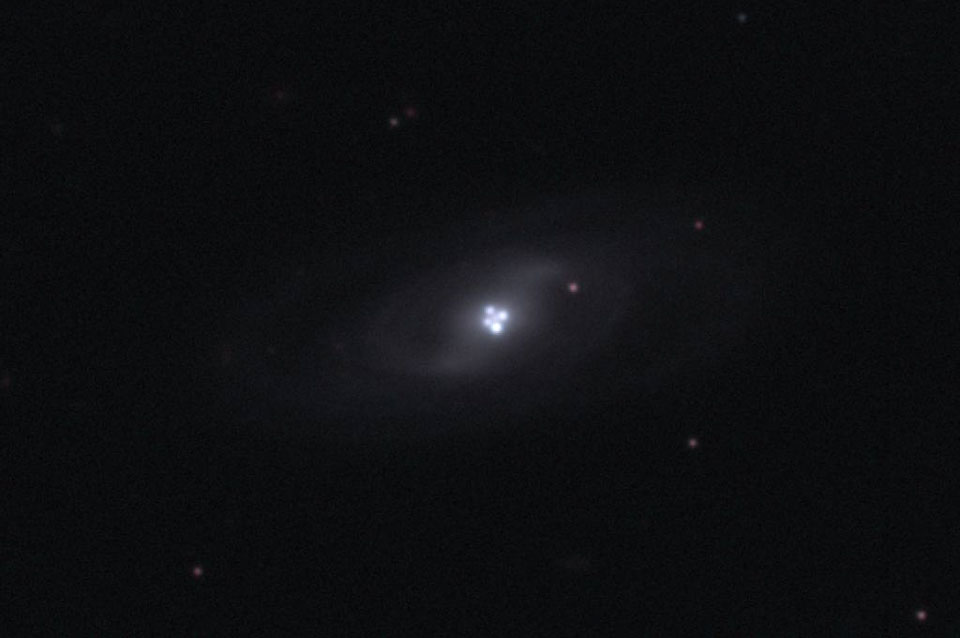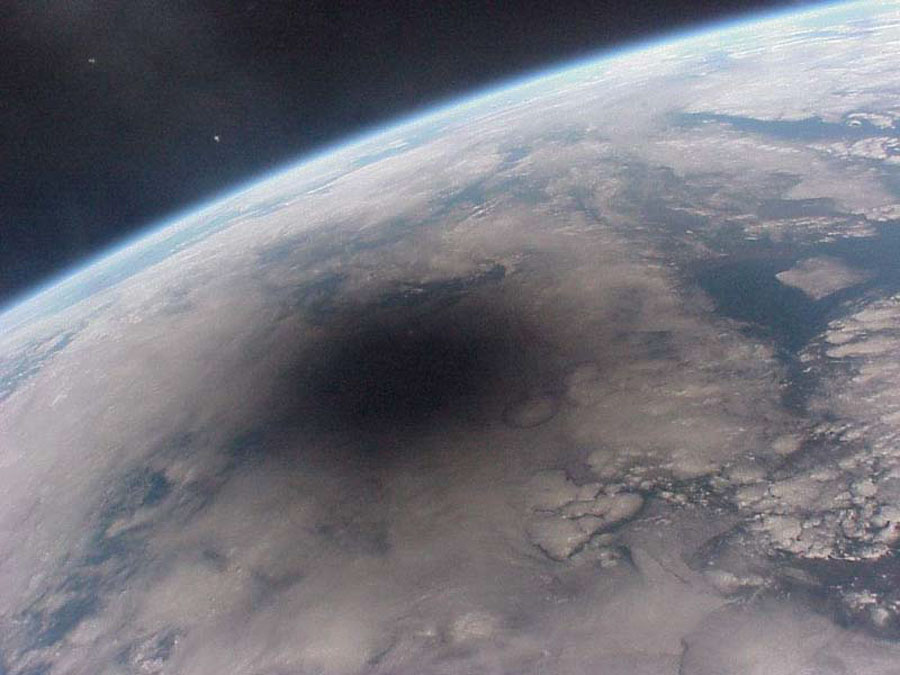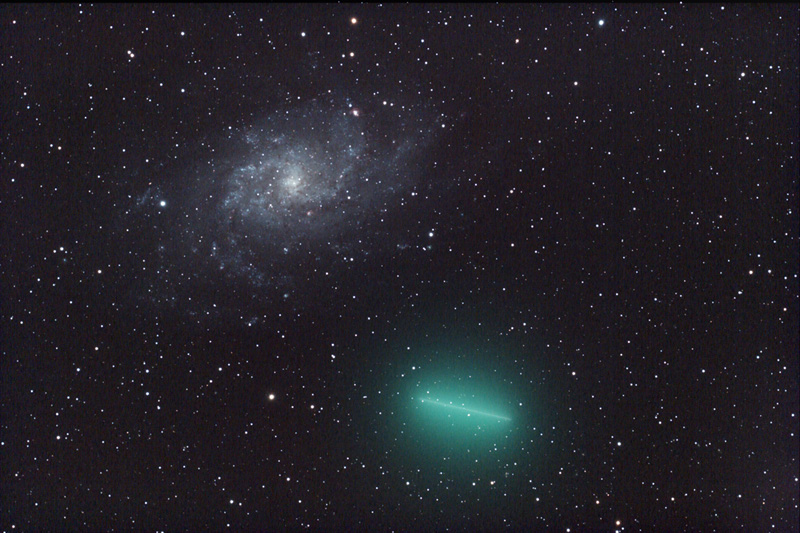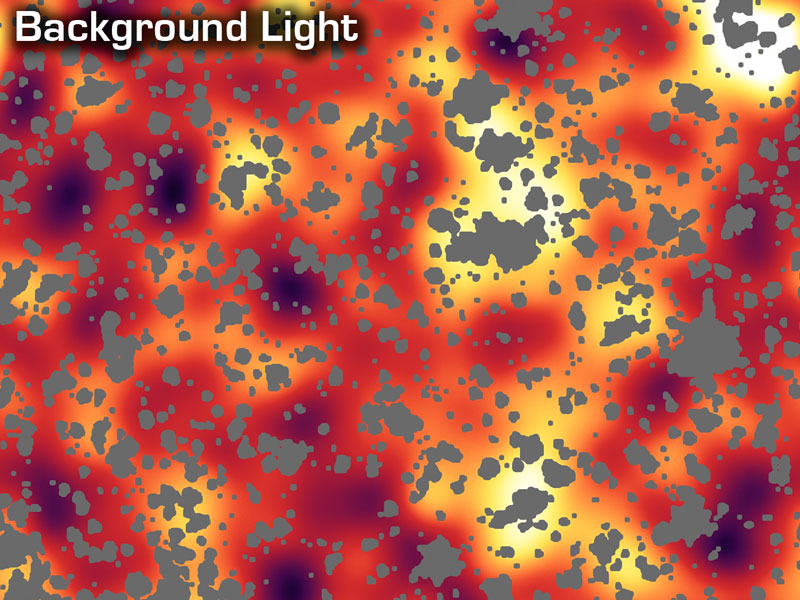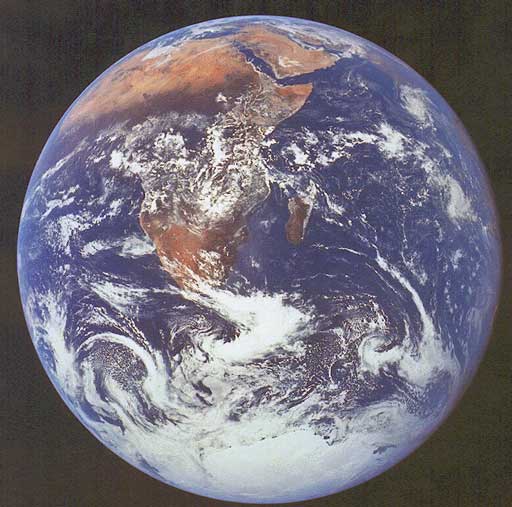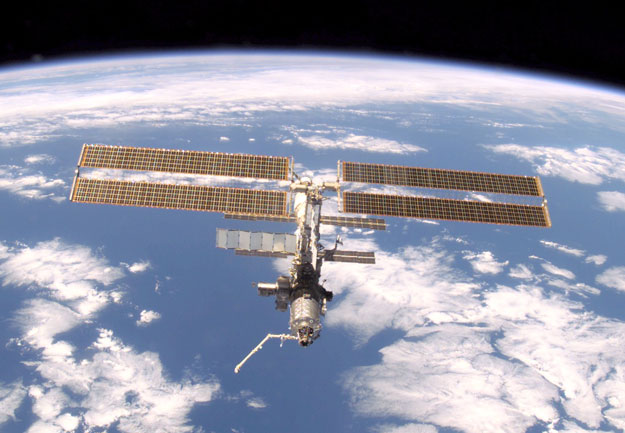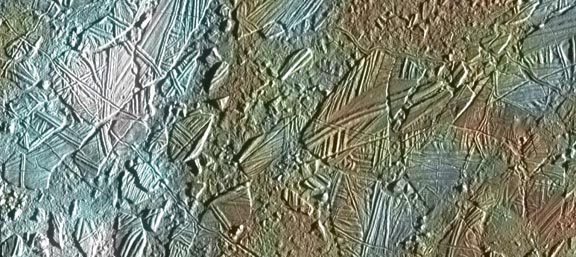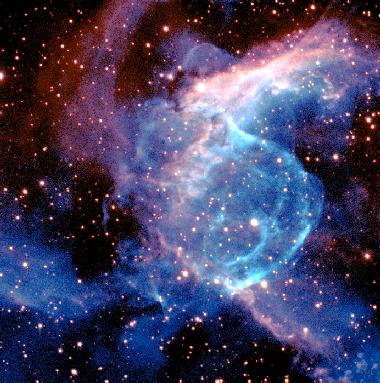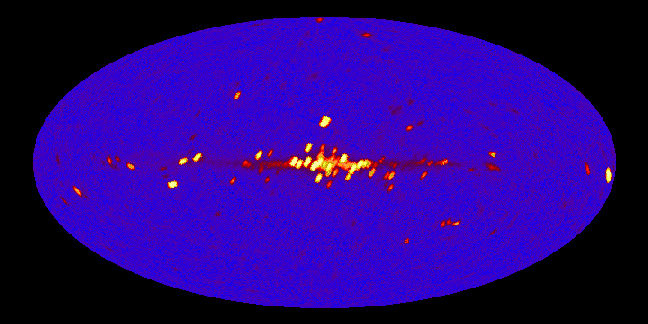| << Previous | Index | Next >> |
2015 Near the center of this sharp cosmic portrait, at the heart of the Orion Nebula, are four hot, massive stars known as the Trapezium. Tightly gathered within a region about 1.5 light-years in radius, they dominate the core of the dense Orion Nebula Star Cluster. Ultraviolet ionizing radiation from the Trapezium stars, mostly from the brightest star Theta-1 Orionis C powers the complex star forming region's entire visible glow. About three million years old, the Orion Nebula Cluster was even more compact in its younger years and a dynamical study indicates that runaway stellar collisions at an earlier age may have formed a black hole with more than 100 times the mass of the Sun. The presence of a black hole within the cluster could explain the observed high velocities of the Trapezium stars. The Orion Nebula's distance of some 1,500 light-years would make it the closest known black hole to planet Earth.
2014 Catching sight of your reflection in a store window or shiny hubcap can be entertaining and occasionally even inspire a thoughtful moment. So consider this reflective view from 300 kilometers above planet Earth. The picture is actually a self-portrait taken by astronaut Michael Fossum on July 8, 2006 during a space walk or extravehicular activity while the Discovery orbiter was docked with the International Space Station. Turning his camera to snap a picture of his own helmet visor, he also recorded the reflection of his fellow mission specialist, Piers Sellers, near picture center and one of the space station's gold-tinted solar power arrays arcing across the top. Of course, the horizon of our fair planet lies in background.
2013 Most galaxies have a single nucleus -- does this galaxy have four? The strange answer leads astronomers to conclude that the nucleus of the surrounding galaxy is not even visible in this image. The central cloverleaf is rather light emitted from a background quasar. The gravitational field of the visible foreground galaxy breaks light from this distant quasar into four distinct images. The quasar must be properly aligned behind the center of a massive galaxy for a mirage like this to be evident. The general effect is known as gravitational lensing, and this specific case is known as the Einstein Cross. Stranger still, the images of the Einstein Cross vary in relative brightness, enhanced occasionally by the additional gravitational microlensing effect of specific stars in the foreground galaxy.
2012 Where's the full Moon? Somewhere in this image, the Earth's Moon is hiding. The entire Moon is visible, in its completely full phase, in plain sight. Even the photographer's keen eye couldn't find it even though he knew exactly where to look -- only the long exposure of his camera picked it up -- barely. Although by now you might be congratulating yourself on finding it, why was it so difficult to see? For one reason, this photograph was taken during the total lunar eclipse last month, when the Earth's shadow made the Moon much dimmer than a normal full Moon. For another, the image, taken in Colorado, USA, was captured just 12 minutes before sunrise. With the Moon on the exact opposite side of the sky from the Sun, this meant that the Sun was just below the horizon, but still slightly illuminating the sky. Last, as the Moon was only about two degrees above the horizon, the large volume of air between the camera and the horizon scattered a lot of light away from the background Moon. Twelve minutes after this image was acquired the Sun peeked over the horizon and the Moon set.
2011 Here is what the Earth looks like during a solar eclipse. The shadow of the Moon can be seen darkening part of Earth. This shadow moved across the Earth at nearly 2000 kilometers per hour. Only observers near the center of the dark circle see a total solar eclipse - others see a partial eclipse where only part of the Sun appears blocked by the Moon. This spectacular picture of the 1999 August 11 solar eclipse was one of the last ever taken from the Mir space station. The two bright spots that appear on the upper left are thought to be Jupiter and Saturn. Mir was deorbited in a controlled re-entry in 2001.
2010 The International Year of Astronomy 2009 ended with a Blue Moon and a partial lunar eclipse, as the second Full Moon of December grazed the Earth's shadow on December 31st. The New Year's Eve Blue Moon eclipse was visible throughout Europe, Asia, Africa and parts of Alaska, captured in this two exposure composite in cloudy skies over Saint Bonnet de Mure, France. Playing across the Moon's southern reaches, the edge of Earth's umbra, or dark central shadow, appears on the right side along with the prominent ray crater Tycho. At maximum eclipse, the umbra covered only about 8 percent of the diameter of the lunar disk.
2009 Did you see it? The last conjunction of Moon and bright planets in 2008 featured a young crescent Moon and brilliant Venus in the west after sunset on December 31st. Seen here in dark, clear, mountain air from Mönichkirchen, Austria, are the two celestial beacons that dominate planet Earth's night sky. That pair was hard to miss, but skygazers watching lower along the western horizon in early twilight might also have glimpsed a pairing of Jupiter and Mercury as they both wandered closer to the Sun in the sky at year's end. Still, while this single, 5 second long exposure seriously overexposes the Moon's sunlit crescent, it does capture another planet not visible to the unaided eye. The tiny pinprick of light just above the photographer's head in the picture is the distant planet Neptune.
2008 This gorgeous galaxy and comet portrait was recorded on December 30th, in the skies over Hoogeveen, The Netherlands. The combined series of 60 x 60 second exposures finds the lovely green coma of Comet 8P/Tuttle near its predicted conjunction with the Triangulum Galaxy. Aligning each exposure with the stars shows the comet as a streak, slowly moving against the background stars and galaxy. An alternative composition with exposures centered on the comet, shows the background stars and galaxy as streaks. The alluring celestial scene would also have been a rewarding one for the influential 18th century comet hunter Charles Messier. While Messier scanned French skies for comets, he carefully cataloged positions of things which were fuzzy and comet-like in appearance but did not move against the background stars and so were definitely not comets. The Triangulum Galaxy, also known as M33, is the 33rd object in his famous not-a-comet catalog. The modern understanding holds that the Triangulum Galaxy is a large spiral galaxy some 3 million light-years distant. Comet 8P/Tuttle, just bright enough to be visible to the unaided eye in dark, northern skies, is about 40 million kilometers (2 light-minutes) away.
2007 What were the first stars like? No one is yet sure. Our Sun is not a first-generation star. It is not even second generation. The first stars to appear in the universe likely came and went about 13 billion years ago. However, deep observations by the Spitzer Space Telescope in infrared light have detected a diffuse glow, possibly from first generation stars hundreds of times more massive than our Sun. The above image shows infrared background light with bright patches that might have originated from clusters of these first objects. Gray areas depict places where nearby foreground stars from our Milky Way Galaxy were digitally removed.
2006 Have you ever seen a sun pillar? When the air is cold and the Sun is rising or setting, falling ice crystals can reflect sunlight and create an unusual column of light. Ice sometimes forms flat, six-sided shaped crystals as it falls from high-level clouds. Air resistance causes these crystals to lie nearly flat much of the time as they flutter to the ground. Sunlight reflects off crystals that are properly aligned, creating the sun-pillar effect. In the above picture taken late last month, a sun-pillar reflects light from a Sun setting over Bangor, Maine, USA.
2005 Welcome to Planet Earth, the third planet from a star named the Sun. The Earth is shaped like a sphere and composed mostly of rock. Over 70 percent of the Earth's surface is water. The planet has a relatively thin atmosphere composed mostly of nitrogen and oxygen. Earth has a single large Moon that is about 1/4 of its diameter and, from the planet's surface, is seen to have almost exactly the same angular size as the Sun. With its abundance of liquid water, Earth supports a large variety of life forms, including potentially intelligent species such as dolphins and humans. Please enjoy your stay on Planet Earth.
2004 The Apollo 12 mission was the second ever to land humans on the Moon. The mission was dedicated to studying the Moon, developing techniques, and developing instruments that could be used in future lunar landings. Astronauts Charles (Pete) Conrad and Alan Bean spent just under two days on the lunar surface in November 1969, while Richard Gordon orbited above in the Command Module. Pictured above in this digitally stitched panorama, Alan Bean works near the Lunar Module. Scrolling to the right will reveal a dark color panorama where flat lunar terrain and a tall video camera are visible. Apollo 12 mission astronauts visited the site of the nearby Surveyor 3 robot spacecraft that had landed on the moon three years earlier.
2003 Mt. Etna has been erupting for hundreds of thousands of years. In late October of last year, however, earthquakes triggered a particularly vigorous outburst from this well known volcano on the Italian island of Sicily. Local schools were closed and air-traffic re-routed as hot lava poured out and ash spewed out and settled as far away as Libya. Pictured above was the Mt. Etna ash plume as it appeared to astronauts on the International Space Station. The view looks toward the southeast. Light colored smoke is due to forest fires caused by lava on the volcano's north face.
2002 High above a cloudy Earth, the International Space Station (ISS) orbits silently. The Space Shuttle Endeavor Crew took the above picture as they departed the space station in mid-December. Endeavor brought up three new astronauts to occupy the ISS and carried home the members of Expedition Three, a trio that has been housed in the ISS since August. Highlights of this Endeavor mission included fixing a solar panel and maneuvering the station to avoid a large piece of passing space junk. Visible in the above picture are the space station's robot manipulator arm as well as several modules and solar arrays.
2001 As the robot Cassini spacecraft rounds Jupiter on its way toward Saturn, it has taken a sequence of images of the gas giant with its four largest moons. Previously released images have highlighted Ganymede and Io. Pictured above are the two remaining Galilean satellites: Europa and Callisto. Europa is the bright moon superposed near Jupiter's Great Red Spot, while Callisto is the dark moon near the frame edge. Callisto is so dark that it would be hard to see here if its brightness was not digitally enhanced. Recent evidence indicates that both moons hold salt-water seas under surface ice that might be home to extra-terrestrial life. By noting the times that moons disappeared and reappeared behind Jupiter in 1676, Ole Roemer was able to make the first accurate estimation of the speed of light.
2000 There, that faint dot in the center - that's the largest rock known. It is larger than every known asteroid, moon, and comet nucleus. It is larger than any other rocky planet. (Nobody knows for sure what size rocks lie at the cores of Jovian planets, or orbit other stars.) The Voyager 1 spacecraft took this picture in 1990 from the outer Solar System. This rock is so large its gravity makes it nearly spherical, and holds heavy gases near its surface. Yesterday, this rock started another orbit around its parent star, for roughly the 5 billionth time, spinning over 350 times during each trip. Happy Gregorian Calendar New Year to all the human inhabitants of this rock we call Earth.
1999 Mercury's surface looks similar to our Moon's. Each is heavily cratered and made of rock. Mercury's diameter is about 4800 km, while the Moon's is slightly less at about 3500 km (compared with about 12,700 km for the Earth). But Mercury is unique in many ways. Mercury is the closest planet to the Sun, orbiting at about 1/3 the radius of the Earth's orbit. As Mercury slowly rotates, its surface temperature varies from an unbearably cold -180 degrees Celsius to an unbearably hot 400 degrees Celsius. The place nearest the Sun in Mercury's orbit changes slightly each orbit - a fact used by Albert Einstein to help verify the correctness of his then newly discovered theory of gravity: General Relativity. The above picture was taken by the only spacecraft ever to pass Mercury: Mariner 10 in 1974.
1998 Jupiter's moon Europa is so exciting that the Galileo spacecraft orbiting Jupiter has now embarked on an extended mission to study it. Oceans that might exist beneath Europa's surface are thought to be one of the best places to look for life in our Solar System. The Galileo Europa Mission has planned eight close fly-bys frozen moon. The first close encounter of this extended mission occurred last December and the next will occur in February. The above enhanced color picture shows a small region of Europa's Conamara region. The white and blue colors highlight regions covered by ice dust from the collision that created the Pwyll Crater. Disconnected islands of ice are visible that have apparently rafted to new positions.
1997 What caused the bubbles and arcs in NGC 2359? The main suspect is the Wolf-Rayet star in the center of one of the bubbles - visible slightly below and to the right of the center of the above photograph. Most Wolf-Rayet stars are known to be massive, highly luminous stars that continually cast off material in a stellar wind - which commonly form bubbles in the interstellar medium. But the unusual structure of the NGC 2359 arcs indicate something more complex is going on. Is the star moving supersonically? Is there another energetic star in the vicinity? Future observations may give more pieces to this picturesque puzzle.
1996 What if you could see X-rays? If you could, the night sky would be a strange and unfamiliar place. X-rays are about 1,000 times more energetic than visible light photons and are produced in violent and high temperature astrophysical environments. Instead of the familiar steady stars, the sky would seem to be filled with exotic binary star systems composed of white dwarfs, neutron stars, and black holes, along with flare stars, X-ray bursters, pulsars, supernova remnants and active galaxies. This X-ray image of the entire sky was constructed with Skyview, using data from the first High Energy Astronomy Observatory (HEAO 1), and plotted in a coordinate system centered on the galactic center with the north galactic pole at the top. Sources near the galactic center are seen to dominate in this false color map which shows regions of highest X-ray intensity in yellow. Astronomers' ability to observe the sky at X-ray energies will be greatly enhanced by the recently launched X-ray Timing Explorer (XTE) satellite.
| << Previous | Index | Next >> |


